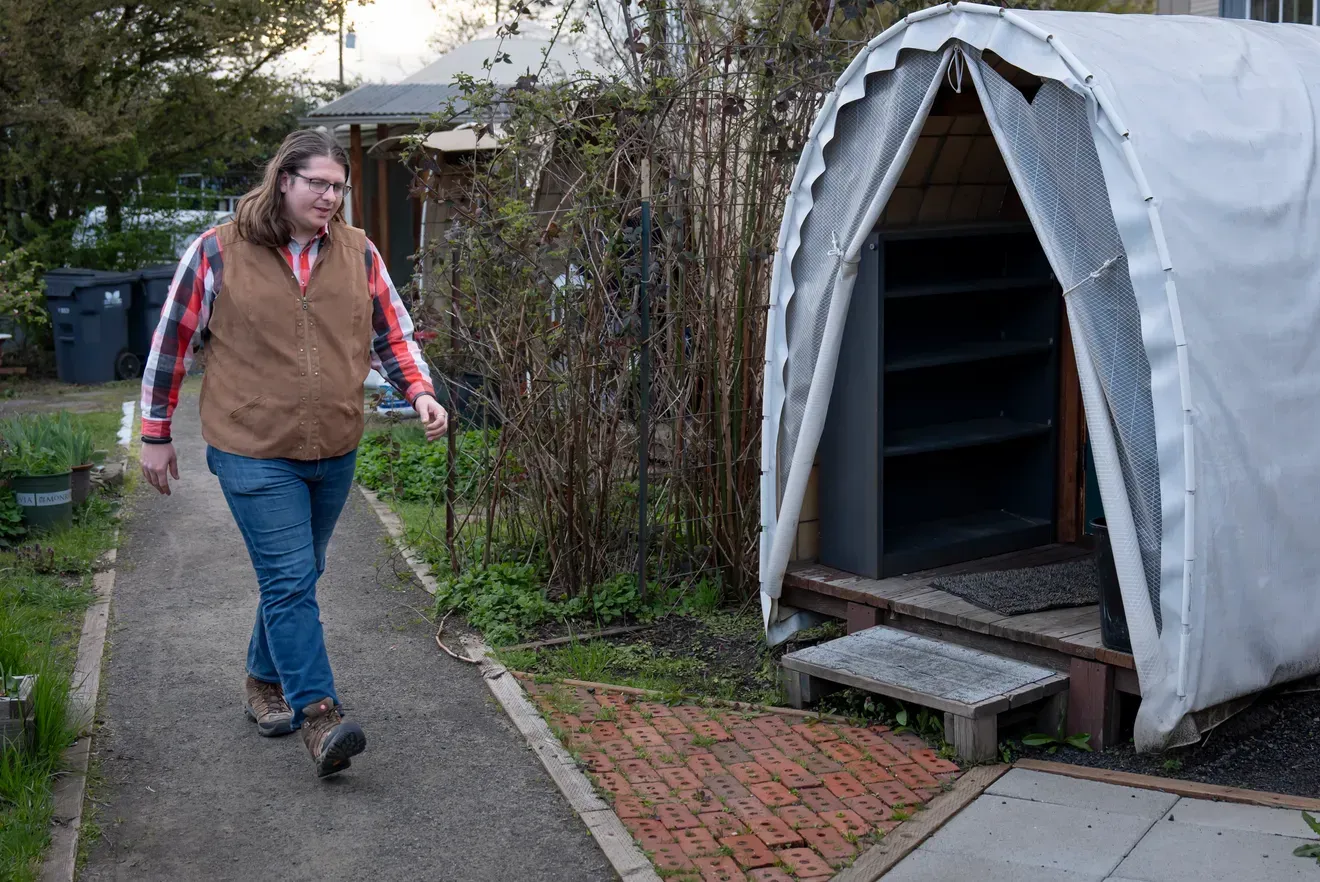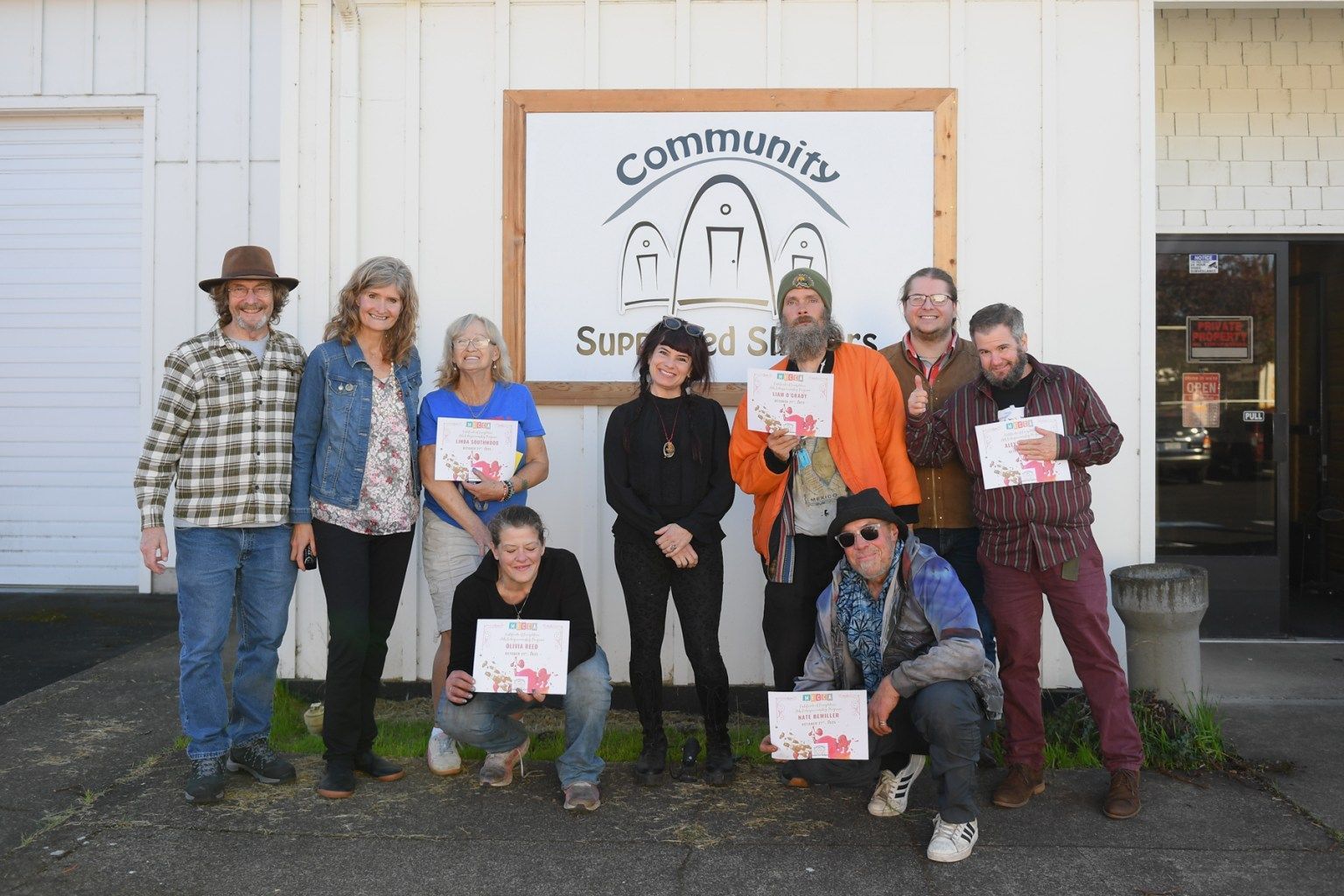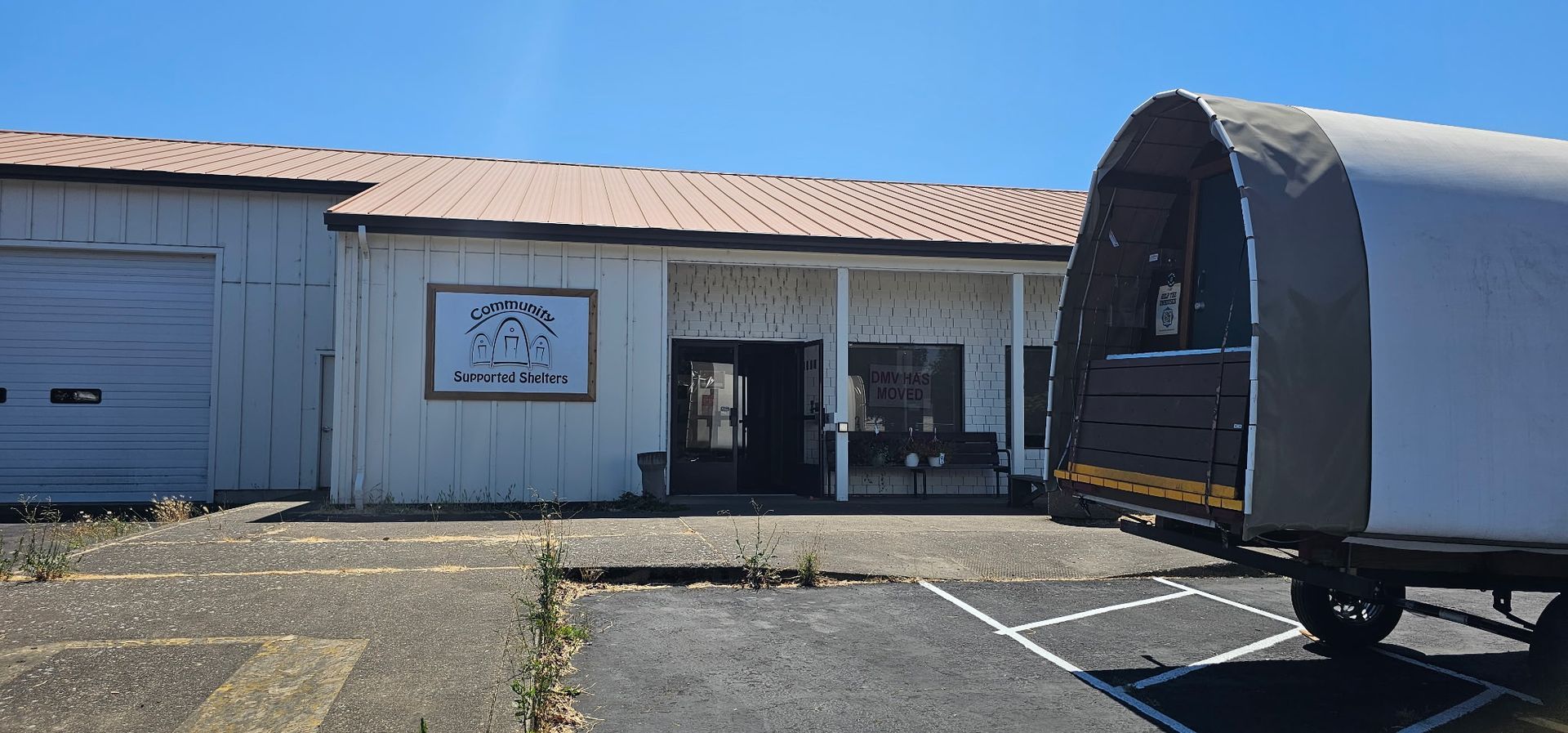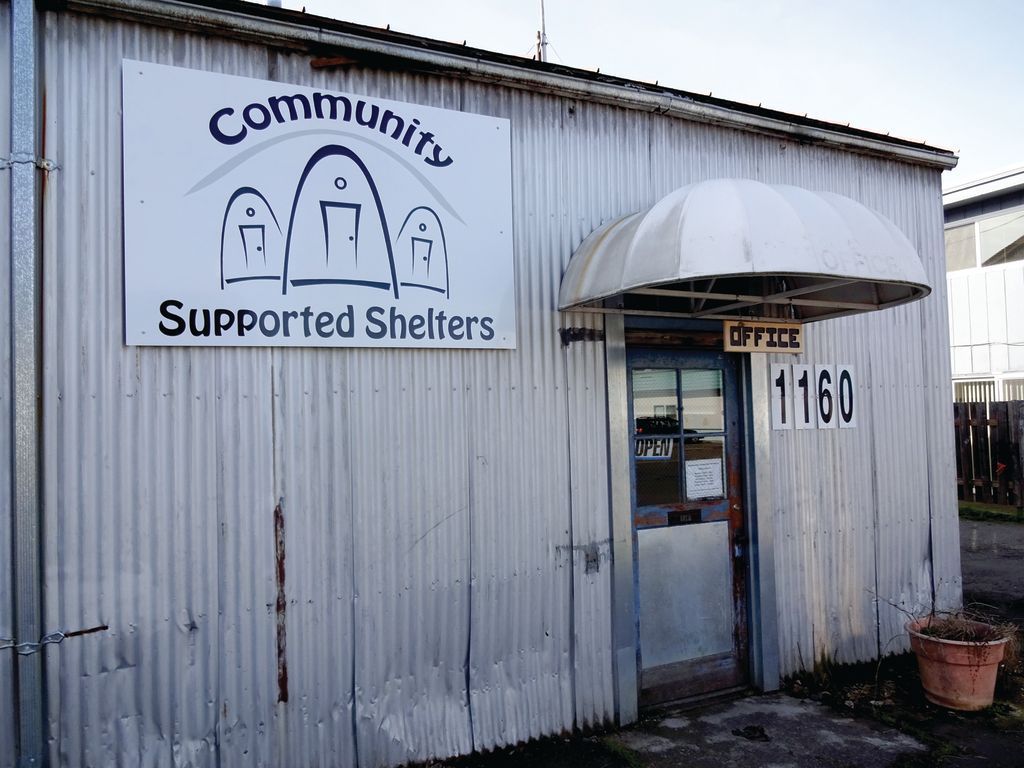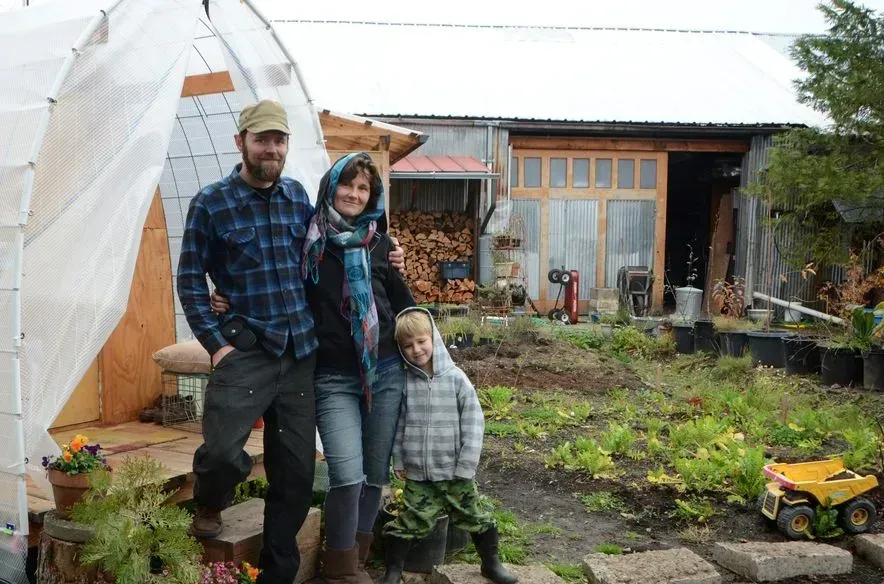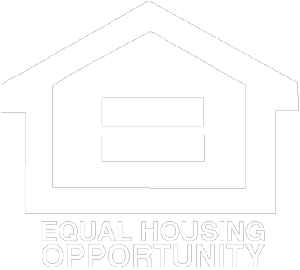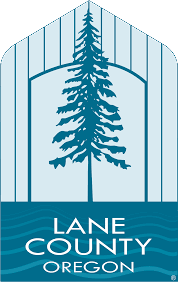Blake Burrell: "For anyone that's ever moved in with roommates, moving 20 people in at one time can be really challenging. So we are taking that incremental approach and are looking somewhere by probably about July or August, having 20 folks on that property."
Presenter: Community Supported Shelters adds 20 more Conestoga Huts as it takes on the old Nightingale site, launches a capital campaign, and prepares to offer some staff members their own desks for the very first time. Speaking to Southeast Neighbors Nov. 11, Blake Burrell:
Blake Burrell (Community Supported Shelters): My name is Blake Burrell. So I’m a co-executive director of Community Supported Shelters. My counterpart is Heather Quaas-Annsa. Community Supported Shelters has about 43 employees and 13 properties in the city of Eugene. We do a variety of services for our community.
[00:00:34] So a lot of people recognize us for Conestoga Huts originally created by Community Supported Shelters back in the 2010s. So we’ve been around since 2013, and our organization has gone through a lot of different iterations and evolutions.
[00:00:49] And we have about 250 Conestoga Huts in Lane County. And Conestoga Huts, as a piece of infrastructure, are actually something that’s built all throughout the world. We have places in Australia reach out to us and ask us questions. We had a group come in from Anchorage, Alaska, who wanted to learn about the Conestoga Hut. There’s a safe spot community in a barn somewhere up in Michigan. We’re representing throughout the whole country.
[00:01:13] And our goal is to do what we can do in our community, but then also educate other organizations or groups that want to work on helping folks who are homeless in their communities throughout the country.
[00:01:26] So in our community, we currently have 171 Conestoga Huts. That’s an additional 20 this year with taking on the Nightingale safe spot down in South Eugene. Within those Conestoga Huts, we serve about 250 people for shelter services a year.
[00:01:45] So our goal is to stabilize folks, get them into shelter, identify what their various needs might be, get to know folks. Folks come in from a really diverse set of backgrounds. There’s no one pathway into homelessness. For folks that have experienced homelessness, you know that this is a really complex social challenge and with increasing cost of living or economic challenges that are brought up in different regions such as Eugene, folks can enter into homelessness from things like: medical bills, student loan debt, a family calamity, a divorce. There’s a lot of different things that can lead to someone not being able to pay rent and not being able to pay the bills.
[00:02:29] So a really diverse group of people that come and receive shelter services.
[00:02:34] Our first step in that process is inviting folks to simply come in, check in, and access day services. Our Access Center and Outreach office down on West 11th is a partnership with Trillium and Lane County and now Lane Community Health Council to keep it going.
[00:02:49] We serve about 800 to 900 households a year out of our Access Center, and those are folks that are coming in and signing up for our waiting lists, and then having access to case management, basic services, like getting an ID, applying for a cell phone, doing what’s called a coordinated entry assessment.
[00:03:06] It can actually help someone get on a wait list for housing with Lane County, as well as connect, take showers, do laundry, stabilization, relationship-building.
[00:03:17] After that, if they engage on that wait list, typically that time can be anywhere between four to seven months, depending on just how quickly folks are going through shelter, what rentals are available. It’s really varying on the time of the year.
[00:03:33] So typically, we’re getting to know folks for about six months, helping them stabilize, in some instances a little longer. When they move into shelter, everyone gets access to case management services, a variety of community programming, folks can engage in our workforce development program.
[00:03:49] So we have pre-employment opportunities for folks to start building work experience. And folks that live in our safe spots actually help operate our safe spots. They work in our hospitality teams, our maintenance teams, and our reception teams. And about a third of our workforce are actually folks who are sheltering or have sheltered with us and our employees.
[00:04:11] So our organization puts lived experience at the front. And lived experience leads what we do and how we make decisions as an organization.
[00:04:20] We have a really collaborative team and really engaged board. And I really think we do some amazing work in the community and I’m proud to work with this organization.
[00:04:30] Presenter: Blake said as part of the city of Eugene Shelter Consortium, Community Supported Shelters works very closely with the city of Eugene.
[00:04:39] Blake Burrell (Community Supported Shelters): A majority of our safe spot communities are on city of Eugene Parks land. So we have a lot of different land.
[00:04:47] Some might recognize, if we talk about down at Skinner Farms, so down by Skinner Butte, there was a property that was kind of swampy. It was really hard to garden on. And Parks and Open Spaces was kind enough to open that up and say, ‘Hey, can you all install a sump pump, put up some pathways, would this be a property that works for you?’
[00:05:08] We have a lot of properties that are like that. We also have properties that are in places where there was a high need for unsheltered populations, and folks that were actually establishing encampments in certain areas and safe spot communities became a resource that then helped folks that were unsheltered in that area get more access to services and awareness of what’s available.




